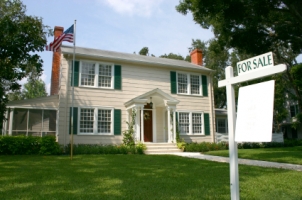
New Home Sales Fall 0.3% in October
By Stevie Duffin Updated on 12/14/2012By Daniel Duffield
New home purchases in the U.S. have abruptly decreased in October, demonstrating the inadequate development of the real estate market recovery.
Sales declined 0.3% to an annual average rate of 368,000 after September’s revised rate of 369,000 that turned out to be less strong than originally projected, according to figures from the Commerce Department in Washington. These figures fall incredibly short of the previously expected pace of 390,000.
Within the last six months, purchases have increased 2.8%, illustrating the restricted growth of employment rates and job production, as well as tight credit within the housing market. These statistics support Ben S. Bernanke’s views that the housing market is integral to economic recovery in the U.S.
According to Scott Brown, chief economist at Raymond James & Associates Inc. in St. Petersburg, Florida, who projected a rate of 365,000 home sales, economic recovery following the job recession must begin with the job creation and growth to recover lost ground within the past few years.
However, purchases rose within two of the four regions last month, swelling 62.2% in the Midwest and reaching a three-year peak. In the west, sales increased 8.8%, averaging at the highest rate since July of 2008.
Despite these promising increases, home purchases fell 32.3% in the Northeast region, although the Commerce Department has stated that the effects of Superstorm Sandy were “minimal.”
Home supply in October rose to 4.8 months considering the current sales pace. Increasing from 4.7 in September, 147,000 new houses hit the market at the end of October compared with 145,000 to end September.
New home sales, calculated after contracts have been signed, have largely been considered a more effective measuring tool than pre-existing home purchases, which are determined following the closing of the contract. In 2011, recently built homes comprised 6.7% of the residential market, declining from a 15% high during the prosperous period of the previous decade.

Didn't find the answer you wanted? Ask one of your own.
-
 What You Need To Know About Escrow
View More
What You Need To Know About Escrow
View More
-
 President Obama Initiates Lower FHA Mortgage Insurance Premiums
View More
President Obama Initiates Lower FHA Mortgage Insurance Premiums
View More
-
 What is Quantitative Easing?
View More
What is Quantitative Easing?
View More
-
 The 5 New Mortgage and Housing Trends for Summer 2013
View More
The 5 New Mortgage and Housing Trends for Summer 2013
View More
-
 Fannie Mae profitability skyrockets
View More
Fannie Mae profitability skyrockets
View More
-
 Foreclosure protections for more soldiers after lawmakers draft bill
View More
Foreclosure protections for more soldiers after lawmakers draft bill
View More
-
 FHFA: HARP success follows low mortgage rates, February refinance volume strong
View More
FHFA: HARP success follows low mortgage rates, February refinance volume strong
View More
-
 Use of Mortgage Interest Deduction Depends on Where You Live
View More
Use of Mortgage Interest Deduction Depends on Where You Live
View More
-
 HUD will sell 40,000 distressed loans in 2013
View More
HUD will sell 40,000 distressed loans in 2013
View More
-
 Mortgage Principal Reduction Could Save Taxpayers $2.8 Billion
View More
Mortgage Principal Reduction Could Save Taxpayers $2.8 Billion
View More
-
 Mortgage Applications Regain Traction after Sluggishness, Rates Continue to Fall
View More
Mortgage Applications Regain Traction after Sluggishness, Rates Continue to Fall
View More
-
 HARP 3.0 Discussions Reveal Little Hope for HARP Update
View More
HARP 3.0 Discussions Reveal Little Hope for HARP Update
View More
-
 Home Prices Rise in February According to LPS Data
View More
Home Prices Rise in February According to LPS Data
View More
-
 Balancing Act: House Committee Hears Opposing Viewpoints Over Mortgage Interest Rate Deduction
View More
Balancing Act: House Committee Hears Opposing Viewpoints Over Mortgage Interest Rate Deduction
View More
-
 Near Record Low Mortgage Rates Buoy Housing Recovery
View More
Near Record Low Mortgage Rates Buoy Housing Recovery
View More
Related Articles
Ask our community a question.
Searching Today's Rates...

Featured Lenders

